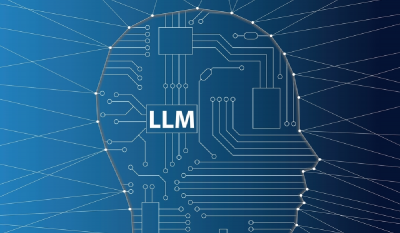Digitization technology has made tremendous progress in various fields that leverages businesses to operate smoothly in their best and worst situations. Looking at this explicitly growing world of industries, it becomes difficult for business parties to give detailed attention to individual customer’s needs.
Further, as a solution, smart conversational AI (Artificial Intelligence) or chatbots were introduced. Conversational AI or chatbots helps to bridge the gap between customers and businesses. These technologies hold the ability to offer businesses the facility to serve the customers most efficiently.
Both communication mediums – conversational AI solutions and chatbots focus on offering customer service and ensuring better engagement. With these two technologies, people often get confused. But when it comes to the business context, understanding the difference between the two is important.
Understanding chatbots
Chatbots can be defined as rule-based natural language text interfaces that operate on a set of defined commands, keywords, and categories to perform customer interaction. The simple design and convenient workflow allow bots to navigate and work according to a specific task easily.
For instance, chatbots connect with customers according to their designed tasks and cannot answer queries out of the box. Thus are not capable of resolving new queries.
Thus, it can be inferred that chatbots have two major limitations – restricted conversation capacity and learning possibility. So, every interaction with a chatbot will seem more or less the same, as the chatbot will not have grown, developed, or learned between conversations.
Chatbots are defined based on the following essential features –
- 24/7 availability
- Operates on the use of keywords
- No self-learning mechanism
- Works according to guided navigation only
- Interface based on button focused
- Quick time to the market
Understanding conversational AI
Conversational AI is an upgraded technology. This interference allows the machine to act, understand, plan, use past data, and reply to human queries in natural language.
In short, Conversational AI can perform multi-turn conversations and deliver judgmental-intensive tasks just like humans. It enables users to interact with the applications efficiently without any barriers.
Different complex industries such as banking, insurance, and telecommunications have moved toward conversational AI platforms since chatbots have failed to fulfill their requirements.
Conversational AI can successfully perform voice, text, and even actions beyond the chatbot’s capacity. While doing so, it ensures superior performance and sophistication to the customers, improving the overall experience.
The use of natural language understanding for better communication is the unique feature of conversational AI.
Other features describing conversational AI includes –
- 24/7 accessibility
- Quick time-to-market
- Pre-trained on thousands of industry-specific consumer plans
- Limitless compatibility and scalability
- Automatic semantic understanding
- Multiple languages
- Deep learning
- Omnichannel presence granting improved social platform
- User authentication assistance
- Individual extraction
- Voice-ready and well-suited with voice assistants like Siri, Alexa, and Google Assistant
Why conversational AI over chatbots?
Chatbots are still effectively used by different online enterprises. There are few drawbacks of chatbots, such as restricted conversation capacity and limited learning capabilities, making conversational AI more appropriate, reliable, and advanced for expanding businesses.
Following pointers will help to understand the exact difference between chatbots and conversational AI solutions.
1. Natural language processing (NLP)
Chatbots’ working depends on logic rules, and responses to queries are mapped according to the keywords already embedded or scripted in the system. Chatbots fail to answer those questions which are based outside the algorithms’ appropriate framework.
On the other side, the conversational AI mechanism works on the natural language processing and response. While answering any query in conversational AI, various technologies such as deep learning, machine learning, and predictive analytics with a human touch are utilized. These technologies contribute together in learning and reverting using past queries and searches. This is why conversational AI steps ahead of chatbots in the context of natural language processing.
2. Integration, scalability, and consistency
Chatbots are cost-efficient but are scattered and disconnected. Chatbots need to be separately integrated into different platforms, which leads to a lack of scalability and consistency. For example, the entire query needs to be revamped when a platform is switched, thus hampering efficiency.
While using conversational AI, consistency in quality is assured, scalability in terms of queries that it can handle can be measured, as well as integration in various social media platforms is evident. It infers that conversational AI can successfully provide an omnichannel presence at different scales, enhancing the customer experience.
Thus, in the integration, scalability, and consistency too, conversational AI steps ahead of chatbots.
3. Contextual awareness
Chatbots provide customers with the required information from pre-defined data present in the system. This means the provided information is completely based on the keywords fetched and holds no other information.
On the other hand, conversational AI calculates an answer based on the past conversation, purchases, chats, queries, and history of the customer and, based on the same, offers personalized suggestions. Such a pattern of contextual awareness makes the customer even more satisfied and happier.
So, again in the context of contextual awareness, conversational AI steps ahead of chatbots.
4. Voice assistance and multilingual
Like conversational AI, chatbots do not support multilingual and voice assistance facilities. Customers using chatbots cannot use voice commands or ask queries in any language other than those recorded in the system.
Siri, Google Assistant, and Alexa are the finest examples of conversational AI platforms. They are programmed to understand the commands given by voice mode in different languages, making it simpler for users to communicate and receive an answer.
So, in the context of voice assistance and multilingual also, conversational AI steps ahead of chatbots.
5. Multi-intent understanding
All queries cannot relate to a single field. Suppose a customer has questions related to two different aspects of customer support, then in the case of a chatbot, the system will not be able to handle the query. This can lead to loss of customer interest, as the question needs to be asked separately or repeated.
Simultaneously, conversational AI can successfully pick multiple requests and navigate in between the conversation according to the topic. This makes conversation hassle-free for users as repetition of the query is not required, thus saving time and increasing overall satisfaction and efficiency.
So, in the context of multi-intent understanding too, conversational AI steps ahead of chatbots.
Closing thoughts
According to a Cognizant report, about 69% of customers prefer to use chatbots to get their queries answered. Another report from Hubspot states that 84% of consumers accept using the conversational AI platform at home, 44% while in cars, and 27% at work.
The above-stated parameters clearly show that conversational AI is the future interface of communication in every business. Studies have proven that about 70% of users are looking forward to replacing their visits to different institutions such as banks, stores, or healthcare providers with conversational AI virtual assistants.
Conversational AI and chatbots are designed to facilitate customers with better assistance and remain cost-effective in businesses. Still, in this race, conversational AI turned out to be more effective and efficient than a chatbot.
To benefit in the long run, future businesses will choose conversational AI over chatbots to implement innovative strategies and take their businesses to the next level.
To learn more visit our latest whitepapers on conversational AI, chatbots, and other related technologies here.














